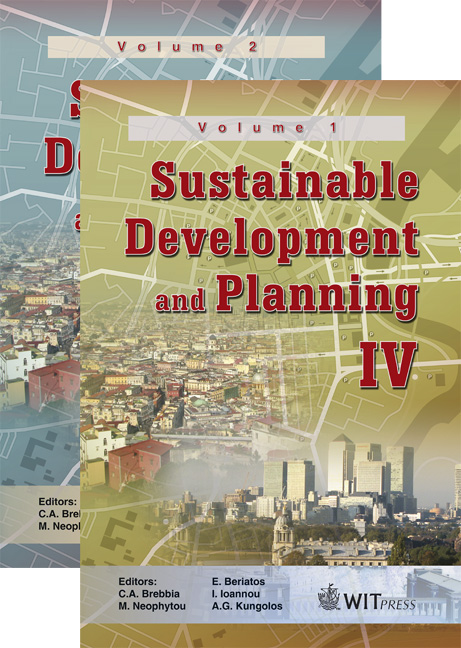An Environmental Approach To Regional Development And Deprivation In The Ghezel-Ozan Watershed
Price
Free (open access)
Transaction
Volume
120
Pages
12
Page Range
119 - 130
Published
2009
Size
4935 kb
Paper DOI
10.2495/SDP090121
Copyright
WIT Press
Author(s)
S. Ansarinia
Abstract
As part of a broader effort to bring about social justice in the 1980s, Iran’s Plan and Budget Organization (PBO) carried out a series of studies titled \“Regional Disparities Investigation”. All development indicators pointed to the Ghezel- Ozan Watershed (GOW) as one of the most deprived regions of the country. The Ministry of Construction Crusade was commissioned to launch a planning project at the GOW scale in 1993. Taking an environmental approach to regional development aimed at alleviating deprivation, this article attempts to elucidate the contributions, on the one hand, of natural resource factors such as climate, water, soil, flora, etc. and, on the other, of development planning efforts. The main conclusions based on the findings of the project are: a) historically, a spatial pattern of natural resources largely determined the appearance of thousands of scattered small villages, one third of which are now deserted; b) the region’s climate and terrain were not favorable to the formation of communication networks and urban centers, with the result that villages were dependent upon the services of urban centers outside the region; c) economic activities such as traditional animal husbandry and agricultural practices are largely responsible for the ongoing deterioration of resources; and d) regional development efforts have been neither spatially integrated nor institutionally sustained. Keywords: Ghezel-Ozan Watershed, natural environment factors, regional development efforts, settlement spatial structure, socio-economic deprivation.
Keywords
Ghezel-Ozan Watershed, natural environment factors, regionaldevelopment efforts, settlement spatial structure, socio-economic deprivation.





